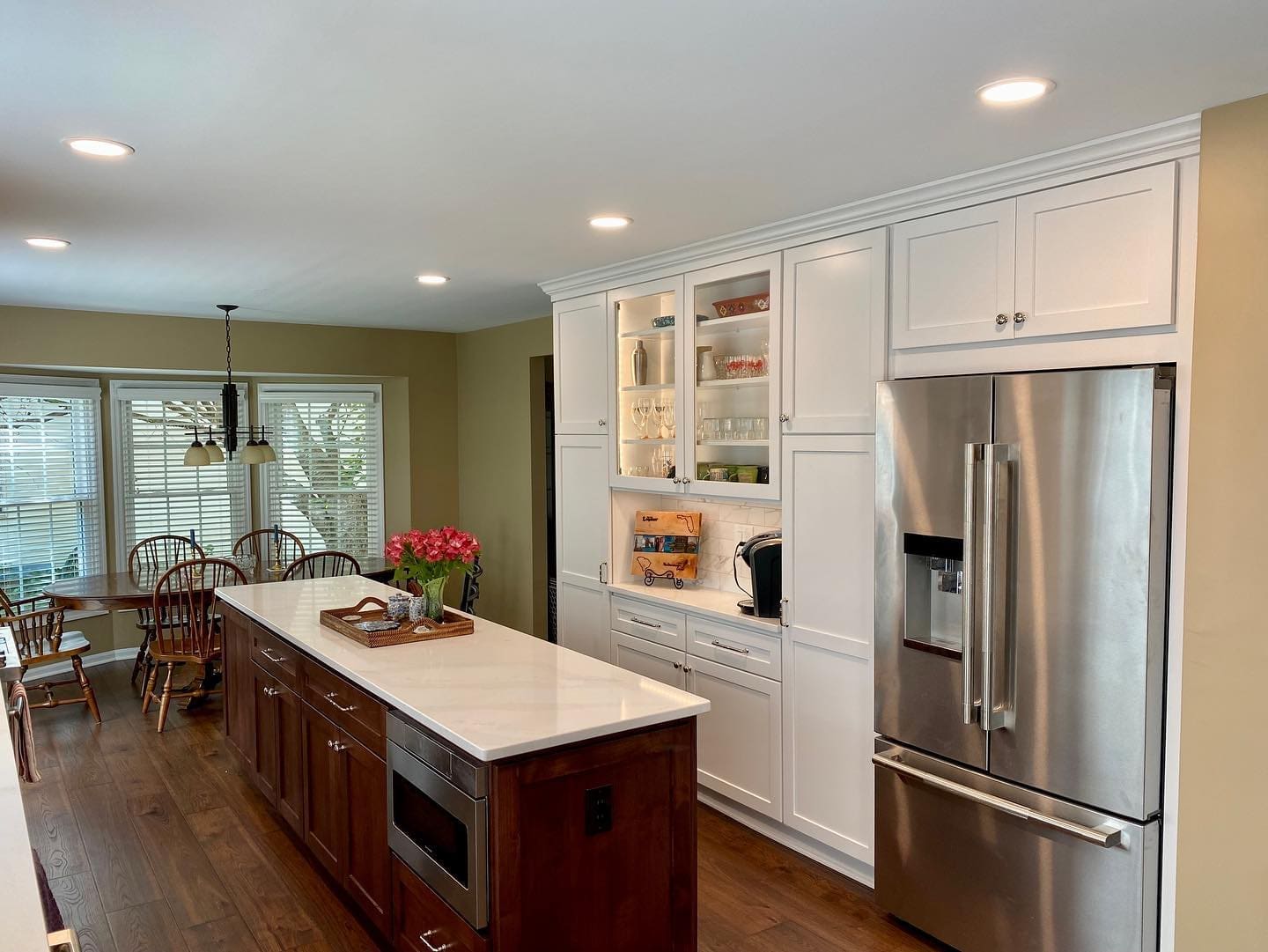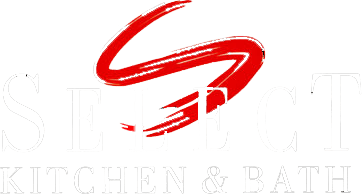 There it is, the kitchen ceiling–up there–looking plain and ordinary and doing little to enhance your new kitchen project. It doesn’t have to be that way; and it shouldn’t be that way. Like open wall space, consider the kitchen ceiling as an untouched canvas whereby an artist can work their craft in creating drama and sensation. Aside from commissioning a neo-Michelangelo artisan to challenge the notoriety of the Sistine Chapel, there are many beautifully artistic ways to transform a mundane kitchen ceiling into an eye-catching, awe-inspiring surface that will take the breathe away from your guests. Whether the surface is treated simply by the use of a tactical paint color or divided and segmented in a spectacular architectural display, your kitchen ceiling can serve as a means to enclose the beauty, charm and spectacle that has evolved within your new kitchen.
There it is, the kitchen ceiling–up there–looking plain and ordinary and doing little to enhance your new kitchen project. It doesn’t have to be that way; and it shouldn’t be that way. Like open wall space, consider the kitchen ceiling as an untouched canvas whereby an artist can work their craft in creating drama and sensation. Aside from commissioning a neo-Michelangelo artisan to challenge the notoriety of the Sistine Chapel, there are many beautifully artistic ways to transform a mundane kitchen ceiling into an eye-catching, awe-inspiring surface that will take the breathe away from your guests. Whether the surface is treated simply by the use of a tactical paint color or divided and segmented in a spectacular architectural display, your kitchen ceiling can serve as a means to enclose the beauty, charm and spectacle that has evolved within your new kitchen.
Design by Structure
While some kitchen ceiling treatments may be attained by creative painting techniques or simply retro-fitting a surface on top of what already exists, other ceiling finishes require a more defined and proactive plan at the onset of the kitchen project. This is warranted because, in these cases, the contractor will need to plan the support systems in the sub-ceiling framing that will enable a structural ceiling to be affixed, built properly. Such is the case with Tray type ceilings. These ceilings are identified by a centralized area of recess that has a protruding soffit around the circumference. These ‘trays’ may be squares, rectangles, octagon, circular, whatever – but resemble a portrait that is framed. These trays may also be further modified if a vaulted effect is desired, whereby the recessed area may be dramatically vaulted while the ‘frame’ remains at the ‘normal’ ceiling height. This style of ceiling also lends itself to a means to discreetly mask ambient lighting fixtures, as these will be hidden within the soffit frame. A variation upon this same tray ceiling theme is establishing the soffit frame and then create a concave or convex radius effect within the tray area.
A ceiling style known as coffered is certainly becoming more popular in today’s kitchens. The basic premise of design here is that the ceiling is evenly divided by decorative beam-like structures, rendering multiple areas of recess ceiling areas. These beams may be of natural wood, painted wood or synthetic non-structural material and are not necessarily a structural component to the ceiling, but certainly appear that they may play that role. The stylish flexibility of these types of ceilings is that the flat recessed centers may be painted in daring fashion or they may be dressed more formally in metals, stained glass or exotic wood. Similar to the tray ceiling, these coffered ceilings lend themselves to a variety of discreet lighting options, which may be used to highlight the ceiling or provide the soft general lighting requirements of the entire kitchen space.
Design by embellishment and retro-fitting
A great way to detail an existing drywall or plaster ceiling is a process referred to as ‘embellishment’. Decades ago when true plaster artisans roamed the earth, these craftsman handily created rosettes, one-of-a-kind patterns and textures in ceilings before the plaster cured. While these artists are rare and hard to come by, technology may have replaced their craft anyway. A ceiling may be skim-coated with plaster, or similar compound, and before the compound sets firm, a relief template is pressed upon the curing compound. It’s not so dissimilar from the printing process of the earliest forms of printing. There are also special ‘rollers’ that can be affixed to a paint roller handle that can uniformly create a similar effect in the wet compound. These ceiling dry with the desired pattern embedded in the plaster itself and may be painted with intricate detail or simple field painted all the same color.
The ease and economical advantage of retro-fitting a decorative finish onto a kitchen ceiling is likely why this method is becoming the rage in the design community as well as with DIY’ers. There is a resurgence of interest in the stamped tin ceiling effect that was popular in the early 1900s. Originally, these were extruded tin sheets of relief-stamped tapestry that was literally installed on top of the existing plaster or lathe. This format was also seen, in more affluent homes, in sheet copper composition. The offerings of today assimilate the styles of old and can arrive in a composite board sheet format, metalized tiles, or paper composite tiles which are incredibly easy to install and finish. The composite tiles, for example, can be painted with a copper, nickel, or pewter metallic-finish paint and give the authentic appearance of a real metal ceiling. Of course, if the budget permits, there are metal ceiling manufacturers and fabricators who can provide you with a very dressy, custom metal ceiling that will have your guests in abject envy.













